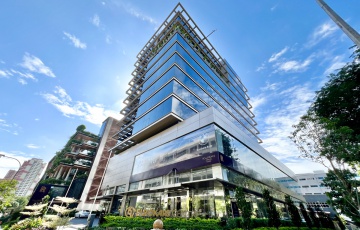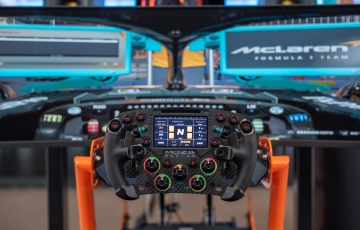27 things Gordon Murray told us about the T.50
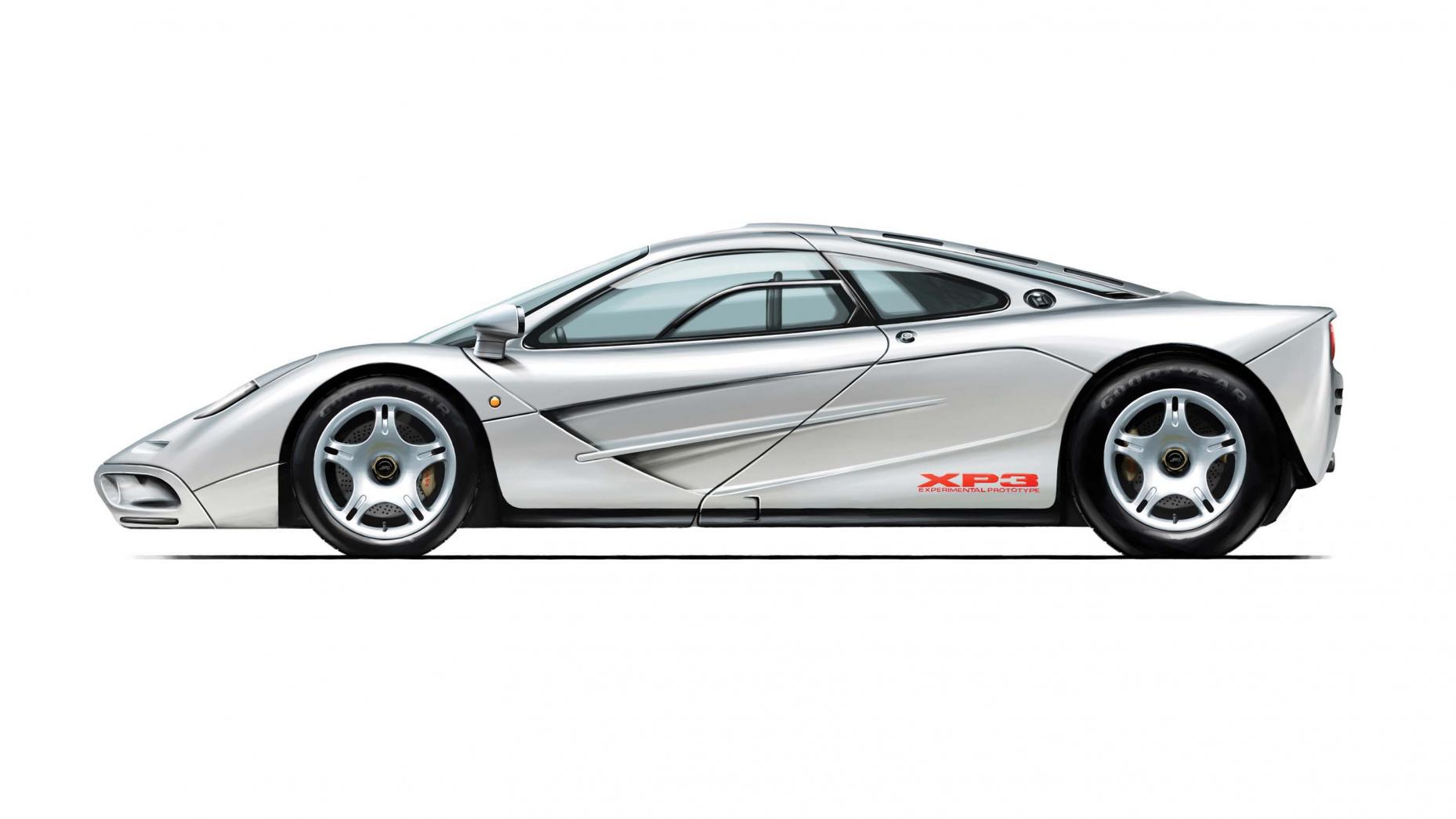
It’s the first true successor to the McLaren F1
“I don’t think anybody truly understood the McLaren F1 formula. And I don’t think anybody’s done a McLaren F1 since the F1. Honestly, I really don’t. It’s for lots of reasons, the most logical one is that it was absolutely a clean sheet of paper car. Nothing was carry over, and one of the reasons why it became iconic is that every component is engineering art. And as light as it could be.
“If you’re Ferrari or McLaren, or even the smaller guys like Koenigsegg or Pagani, you’ve already got a powertrain, you’ve got driveshafts, you’ve got an engine, a gearbox, you’ve got hub carriers, wheel bearings, wishbones, an air-con system. If you want to do a new car and you want it to be commercially successful, you’re going to use all that stuff.
“OK, the Aston Martin Valkyrie is bespoke, but its targets are so totally opposite. The Valkyrie is designed to beat a F1 car or go around the circuit quicker than anybody else. Full stop.”
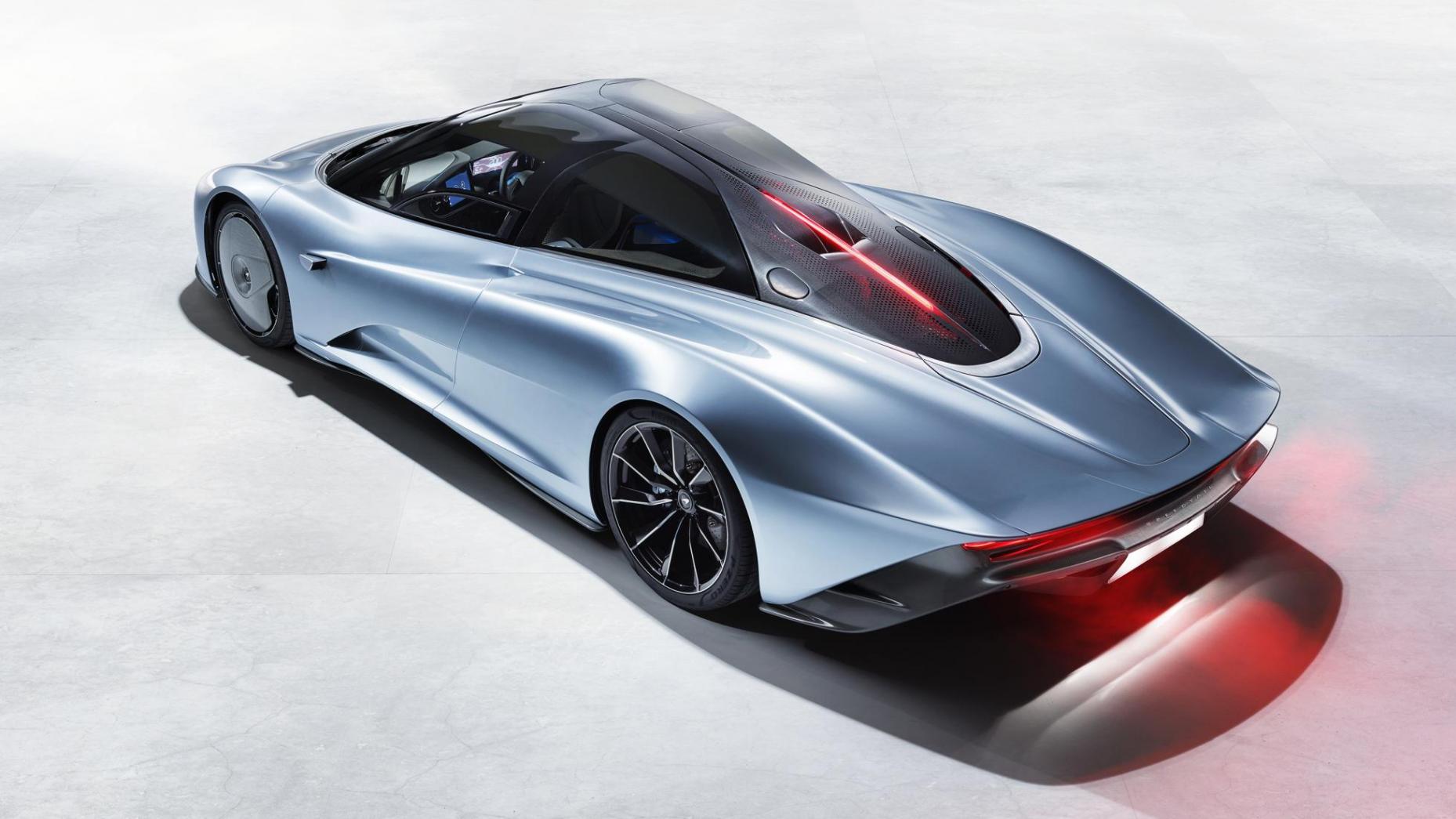
The McLaren Speedtail almost killed it
“We almost stopped the whole project when McLaren announced the Speedtail. I got the team together, we’d only just come up with the concept, and McLaren announced a three-seater, central driving position sportscar. I told them ‘be prepared to stop because McLaren is surrounded by F1s, they have the template right in front of them, they can sit in it, drive it, measure it, scale it.' And then when we saw it. We went ‘fine’, the project’s on again because it couldn’t be more different.”
It’s an anniversary present to himself
“I suddenly realised at the end of 2016, beginning of 2017, I’d been in cars for exactly 50 years. It started as a low-key party for me and the company and some of my mates, a little exhibition and a few drinks. And then we started putting it out there and Bernie said, ‘you can have all the brands in it, there’s 15 brands’. McLaren said you can have your three world championship F1 cars and you can have all the variants of the F1. Before we knew where we were, we had 42 cars.
“So that happened in November ‘17 and that was the time I started thinking ‘nobody’s really done an F1’. So as we head towards turbos, hybridisation and then full electric at some point, why don’t we do one – it’ll probably be the last great analogue motor car.”
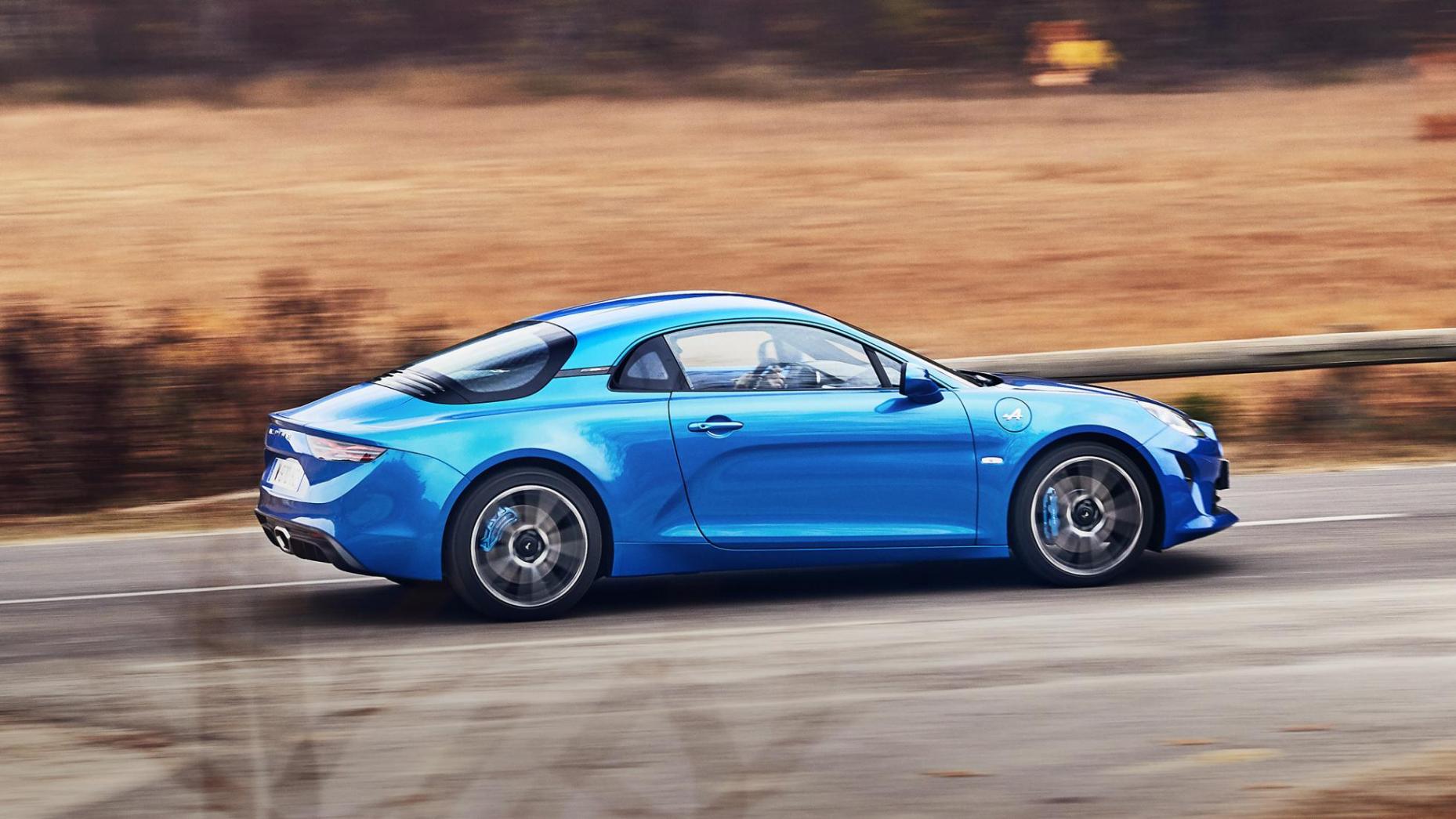
The T50 is benchmarked against his Alpine A110
“For the F1 we benchmarked the Honda NSX because that was the best ride and handling compromise I’d ever driven at that point. Up until now, the best handling car I’d ever driven was a Lotus Evora - that’s including all the supercars - and then I bought my Alpine and it’s even better.
“So we benchmarked that, put it on the rig and measured torsional rigidity. It’s fantastic to drive - passive dampers, coil springs, double wishbone suspension and an absolute rigid focus on weight. I wish I had a manual ‘box and it’d even better.”
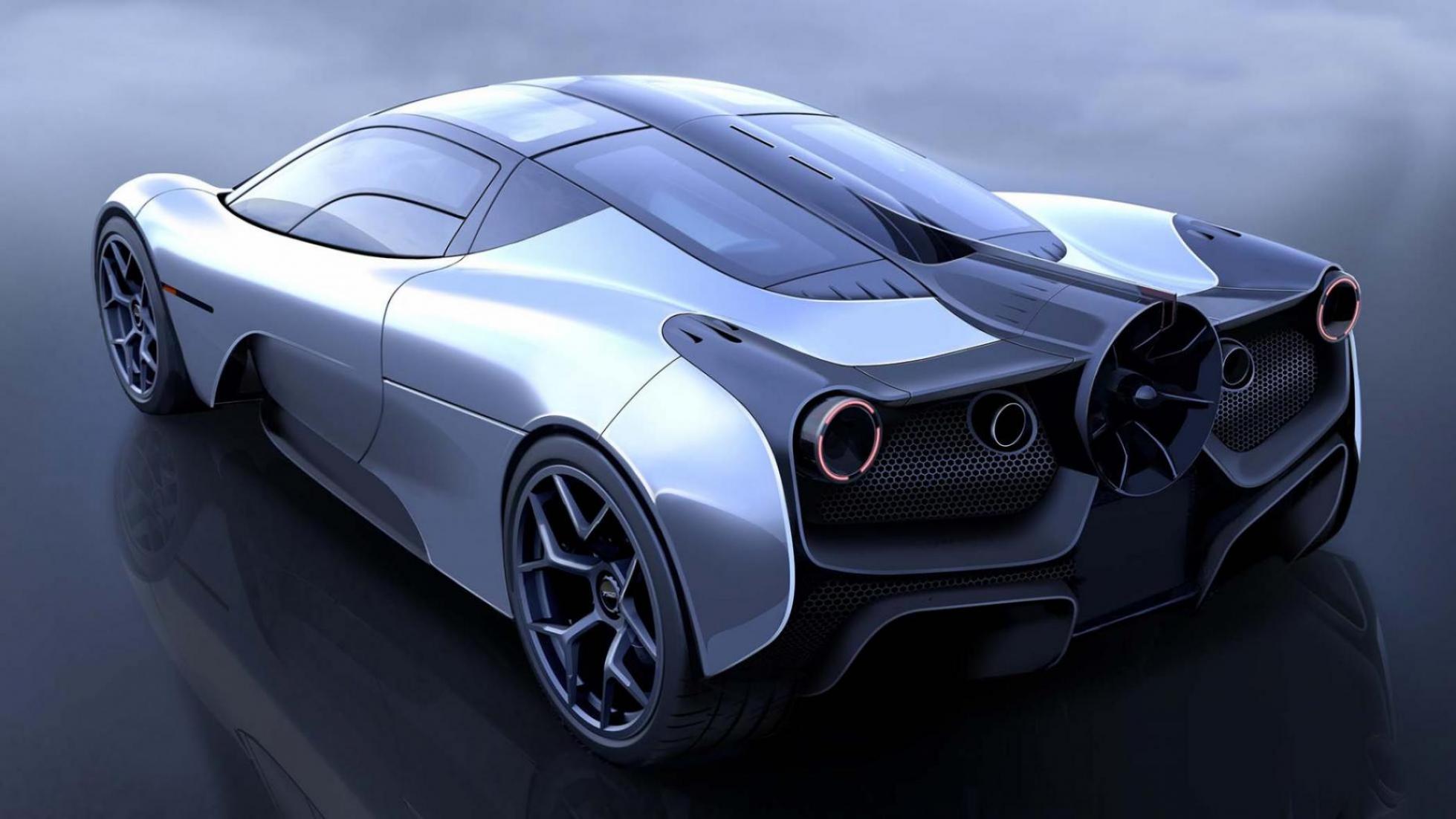
The design is all about purity
“I’m getting a little bit sick and tired of these supercars that appear with huge holes in the side and back - the BMW i8 was the first one - and they tell you it’s all about moving air from here to there. Give me a break, really.
“I wanted to get back to something like the F1. You know it’s 30 years old when you see it, but it’s retained a certain balance, it’s proportions are good. It’s aged, but it’s aged gracefully. This time around the proportions are the same, because the architecture is identical. Actually, it’s 15mm wider for crash regs and it’s 60mm longer, but it’s still a smaller footprint than a 911 and I’ve managed to keep it clean.”
The interior is pure analogue and (almost) a screen-free zone
“Everything was analogue on the F1, and this is even more so. There’s not a touchscreen in sight. On the F1 the instruments were all stainless steel, hand etched, hand painted. The rev counter needle was machined from aluminium, the hub was an aluminium machined part and glued together, and I used a stepper motor so it looked like an old rev counter and trailed just a little.
“For the T.50 I’ve found a military switch with the most delightful click and zero play. And, I mean zero play. I measured them all in the spindle. So if you want anything to do with the engine, the aerodynamics, the windscreen wipers, it’s all click, click, click. There are two screens for information, but I’ve buried them so far behind the rev counter until you switch something on, you can’t see them. And the rev counter… I’m getting a watch company to make that.”
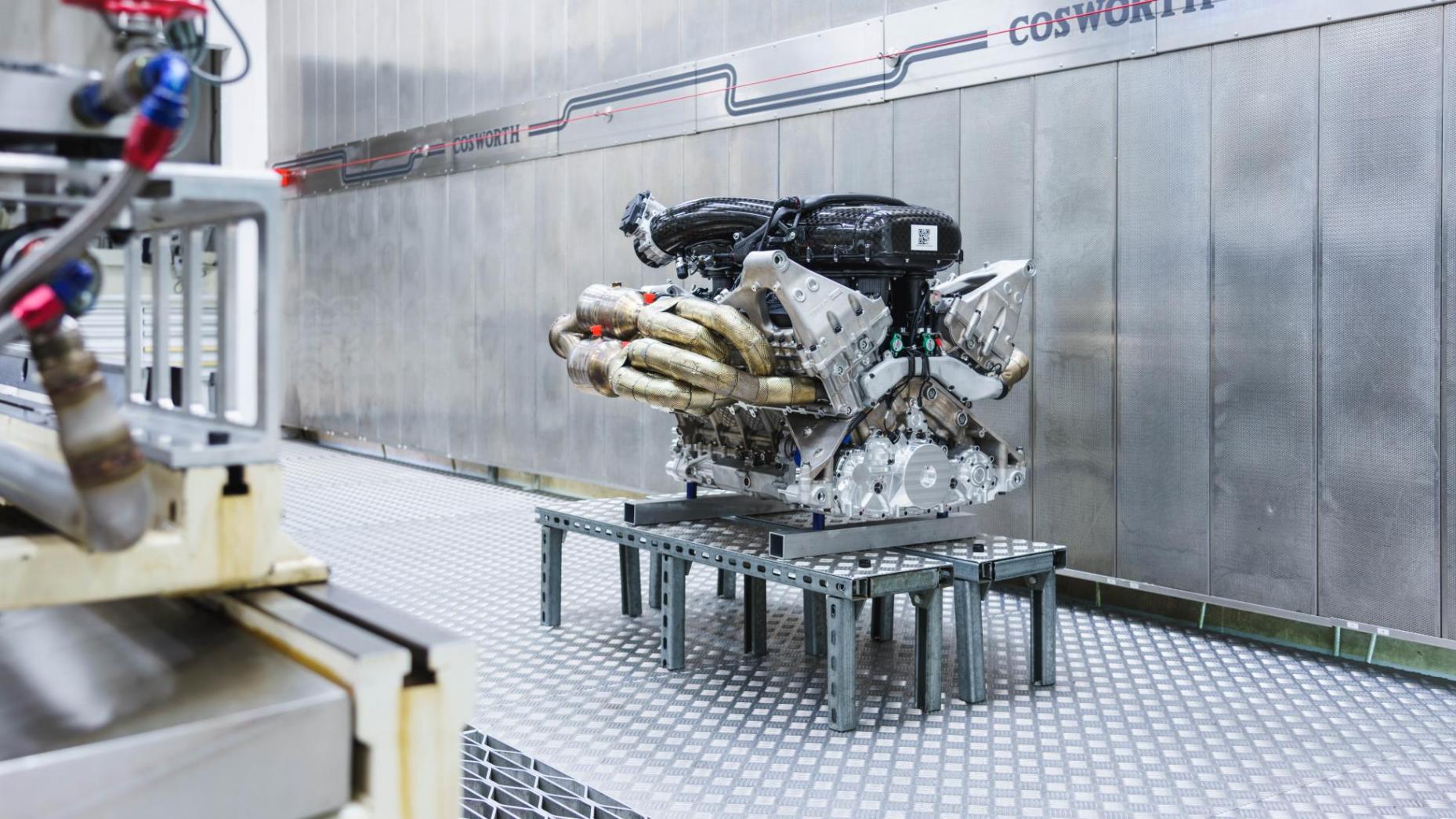
Gordon’s Cosworth V12 has nothing to do with the Valkyrie’s Cosworth V12
“Ours has nothing to do with the Valkyrie engine (pictured) whatsoever, apart from fantastic background knowledge. I went out to three people for the motor and we went with Cosworth. I’ve worked with them before, my first Grand Prix win was Cosworth, and after doing the Valkyrie they must have learned a hell of a lot. So we’ve got the next generation. It’s got a lot more titanium in it, it’s 60kg lighter than the F1’s engine.
“If you want to boast that you’ve got one horsepower per kilogram, you need a big engine, and electric motors and batteries, and suddenly you’ve got a 1,250kg car. And then you need wider tyres, and bigger brakes, and bigger driveshafts. Keeping things light is a virtuous circle.”
Gordon originally wanted a 3.3-litre V12
“Originally I wanted a 3.3-litre V12, but to be quicker than anything else out there, to be up there with the very best power-to-weight ratios, we needed it to be under 900kg. We spent a month trying to trim everything and we couldn’t do it. So then we went to 3.6, and we still couldn’t make the sums work. You have to be realistic on the weight because beyond a certain level you can’t make the wheels any lighter or the brakes any smaller. So we ended up with 3.99 - I wanted it to be under four litres for sure, and that meant the total weight had to be under 1,000kg.”
The engine doesn’t just rev high, it revs fast
“It’s the lightest road V12 ever made, and it’s the highest revving. I didn’t set many targets for Cosworth - one of them was weight, the other was revs. The current record is the LCC Rocket, which is 11,500 rpm and Cosworth’s initial calculations - for four litres, conventional valve springs - said maybe 11,600 rpm. I thought ‘no, let’s go for it. 12, it has to be more than 12.’ And they’ve done it.
“I went through every F1 experience in my head, asking myself what do owners still talk about? One of them is engine pickup in neutral. I know it’s boys toys stuff, but if you put the F1 in neutral and blip the throttle, it just goes. If you didn’t know you’d say it was a one litre engine, honestly, and that picks up at 10,000 revs a second.
“I said to Cosworth, you have to be better than 10,000. In January I got an email saying, ‘I think we’ve met your targets. 28,000 revs a second’. Even as an engineer, my head can’t go there. That’s idle to 12,000rpm in under 0.3 of a second.”
It has two distinct engine maps
“We’ve got an analogue switch where you’ve got map A, which is driving to work, going on a rally with mates, taking somebody to school or whatever. That runs out at what we call ‘Ferrari’ revs, so about 9,000 to 9,500 rpm, but it moves all the torque down the bottom so the thing is just drivable. You’ve still got 600bhp and 9,000rpm and everything down the bottom end.
“Then imagine you’ve got your mate in the car and go ‘you want to hear 12,200?’ Click, and it remaps the thing completely. I couldn’t do that with the F1 - it had a throttle cable so the map they did at BMW was the map you got. If you moved the throttle from here to here then the engine did ‘A’ and it would never do ‘B’. This is a whole new ballgame.”
It's going to sound spectacular
“Yes we’ve got exhaust valves on the T.50 but 90 per cent of the sound will be intake. One of the things that F1 owners talk about endlessly is the growl from the V12. But it’s nothing to do with revs, it’s to do with throttle opening, which is fantastic because when you’re cruising and you’ve only got the throttle open a bit it’s relatively quiet in the cabin. But when you’ve got a passenger and you give it any sort of throttle, it just comes alive.
“That is the intake pulse from the ram intake above your head coming back. I thinned the roof panel down on the F1 so it acts as a loud speaker, and I tuned the thickness in the same way people tune exhausts, to pick up the resonance. And we’ll do the same thing on this new car.”
It nearly didn’t have a manual gearbox
“I have an admission… I was going to use a sequential manual gearbox up until last summer. And then when customers started coming in I was lobbied to make it an H pattern. I went ‘really?’, and now we’re getting compliments. We’ve only had one customer out of all the cars sold ask for a paddle-change ‘box. They’ll have to go for the track car, that gets paddles.”
The gear lever should be something special, and the linkage will be exposed
“The F1’s lever is aluminium, and because it’s so short I wanted a really chunky look. It’s extremely thin wall aluminium, machined from solid on the F1. I styled it myself, it was a bit 90s.
“This time around I want a skinny look, I want to differentiate it. I’m trying to make everything look lighter, as well as be light. It’s titanium, but very spindly with a simple round knob on the top.
“With the F1 when customers had a service done and saw the mechanism of the gear change, how everything is so beautifully hand machined, they couldn’t believe it was hidden. Once you bolt it into the tunnel, you can’t see it. So this time, I’m tempted to leave it out on display so you can see everything.”
The steering is assisted, but only at very low speeds
“Manual steering, it’s a pain in the arse for parking, but once you get going you just can’t beat it, however good you get with hydraulic or electric assistance. The problem with designers is that if you know you’ve got power steering, you don’t get the basic parameters correct because you know you can work around them.
“I have very strict rules for the steering geometry. If you keep it within those, it’s going to give you just beautiful feedback. No kick back. For the T.50 we’ve designed it as a manual steering, so we’re well within all those parameters. It’s a pain in the bum, but if you try hard enough you can get it right.
“Once you get above 15 or 25km/h the steering changes to manual. We’ve got a new patented system which kicks in for parking and then kicks out again, but the clever thing is it’s all designed to work around what is essentially a manual steering setup.”
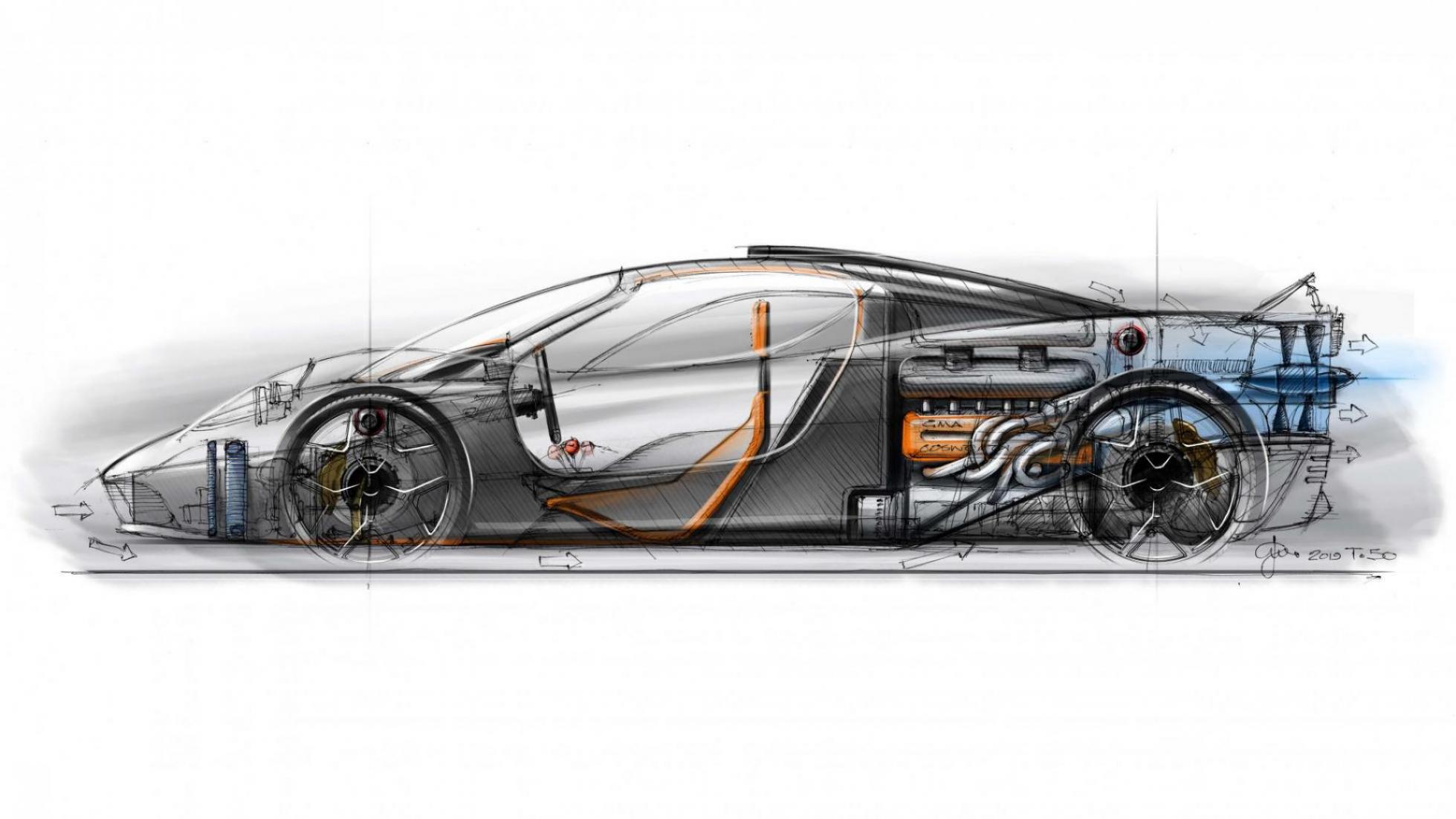
It will be comfier than you think
“The F1 is quite soft, I bet the natural frequency is below most fast German sedan cars these days. The T.50 is also very compliant. I mean the F1 is basically a Sports GT - it’s got luggage space, air-con, it’s got a sound system. The T.50 will be the same.
“I’m hoping people are going to be using this car properly because it’s got more luggage space than the F1, a bit more cabin volume, a bit more interior stowage, better air con, better lights, better brakes, better gear change. I’ve tried to make it do everything the F1 did but slightly better.”
Top speed will be lower than the F1, but who cares?
“We’ve got a lot more downforce on this, which kills the top speed, but we’re not aiming for top speed. It’s got to do 355km/h+ probably, but who cares?
“With the F1 people said: ‘you must’ve known it’s going to do 386km/h?’ I calculated it would do 378km/h to pick the sixth gear ratio and it ending up doing 386km/h, but it was always going to be a quick car. The new car is light and it’s powerful, it has a better power-to-weight ratio than a LaFerrari, it’s got a better power-to-weight ratio than a McLaren P1 GTR. So, I mean, what more do you want? If it does 0-95km/h in 2.9 or 3.5 seconds, who cares?”
The track version will allow some tinkering
“One of the reasons I’m doing the track car, is I hope people will leave the road cars pure. If they want to play, come and stick some more wings on the track car. I think every one of the 25 track cars we’re building will probably be different.
“I’m making them adjustable and part of the deal is you get two or three days at a track with me, and we set the car up for you. If you’re uncomfortable with the level of downforce, for example, we’ll knock some off and re-spring the car.”
The T.50 could go racing
“It’s still very early, but we’re talking to the ACO and the FIA. We’re interested in their hypercar series, or whatever it would fit in. The problem I’ve got is the current weight limit is around 1200kg. So to put over 300kg worth of steel on the car is dangerous, really. So if they want us in there, we’re going to have to come to a balance of performance compromise where maybe we run less power but we run lighter. I honestly don’t know yet, but we wouldn’t be able to run the fan.”
It definitely won’t have carbon wheels
“I wouldn’t touch carbon wheels with a barge pole… they’re just too dangerous. With an alloy you can give it a good old gouge, one and a half millimetres deep, and you’re fine. With a carbon wheel if you break through one layer of fibres with a scratch or a stone or a lever or anything, the failure mode is catastrophic.
“There’s no such thing as crack propagation with carbon. One minute it’s fine, then the next it’s in a thousand pieces. We could find 1.2kg on the front and 1.6kg on the rear with carbon, but it’s just not worth the risk. With forged aluminium we’ve hit our weight target.”
The tyres aren’t enormous or bespoke
“The other thing about the car, because it’s 980kg and there’s not ridiculous amounts of downforce, the tyres are reasonable. They’re 235 at the front and 295 at the rear.
“We’re working very closely with Michelin, and that’s all we need. It uses standard tyres, they’re not £25k a pop, or anything silly. Also, narrower tyres means more feedback, less inertia and quicker acceleration.”

When Gordon explains aero, it makes sense…
“One of the problems with any downforce, whether it’s fixed wings or ground effect, is the downforce goes up with the square of speed. So something like a Valkyrie is going to have to run hugely stiff springs to just support itself at 270km/h.
“So really where you want the downforce is having fun at 110, 130, 145km/h, and when you get to 240km/h or so you actually want to bleed it off because you just get uncomfortable. You’re down on the bump stops. You’ve got no ride height left. And then at 320km/h it’s ridiculous. Any one of the supercars suffers from the same thing.
“So to counter that we’ve got a reasonable amount of downforce, but we can enhance it or lose it with the fan. That’s the basic premise. So in auto mode, when the fan’s off, you’ve just got a conventional ground effect car like McLaren, Ferrari or Aston.
“The other auto mode is braking - we monitor car speed and deceleration and when it decides you need assistance, the wings pop up to 45 degrees. And the fan spools up to maximum speed, about 3000rpm, and valves in the diffuser open. That removes all the dirty air, the boundary line, which forces the air to follow this really aggressive diffuser. And that’s boundary load control, that’s the trick, and we double the downforce. Braking from 240km/h that means you can stop 10m shorter, which is a hell of a lot.”
The ‘High Downforce’ aero mode is for wet B-roads, not just track attack
“So it’s slippery, it’s wet, you want to have a bit of fun on a back road… it’s another analogue click to access the High Downforce mode. The spoiler comes up by 10 degrees, the fan spools up to about half speed and we open the diffuser valves, which gives us around 30 per cent more downforce. And that’s downforce you can make work at lower speeds - 80, 95, 110km/h.”
But the coolest aero mode is definitely ‘Streamline’…
“This is where it gets fun. Imagine you’ve got a long straight, you’re doing 145, 160, 190km/h wherever you happen to be, and you want the car settled down. You select ‘Streamline’ mode, the spoilers go to minus 10 degrees, which reduces the base suction behind the car. The fan goes up to absolutely maximum speed, but we leave the diffuser valves shut.
“Instead of taking air from underneath the diffuser, the fan takes all the air from the flanks so in plan we have a long-tailed car. On top of that, because the fan has so much air going through it, we fill the trailing wake with the output from the fan, creating this virtual long tail - we effectively add a metre on to the back of the car.
“That reduces overall drag by 10 per cent so the whole car settles down, you get wheel travel back, the car feels steadier, you get better fuel consumption, it’s quieter and calmer. If you were driving to the South of France, you’d probably leave it in Streamline the whole way.”
...actually, no, it’s ‘Vmax Boost’
“When you’re going really quickly and you want to get another little whoosh, you click the Vmax Boost mode and we switch around 30hp from the integrated starter generator so it feeds straight back into the crankshaft, leaving the fan to run off the normal battery for a couple of minutes. It’s not hybridisation, it’s completely different.
“The thing I loved in the F1 was coming onto a straight at about 110km/h in third. You could get to 320km/h really quickly, then you trail the throttle at 320km/h and bang it back again and it still gives you a big kick in the back. People loved that, I wanted to do something similar.”
OK, final answer, it’s the show-off ‘Test’ mode
“Because the F1 was the first car with active aero, I had a test mode. So when you stopped at the lights or had your mates around you could go into test mode and the various bits popped up and back. With this test mode, we open the valves, it fires the fan up to absolutely maximum speed and the flaps pops up to 45 degrees. It’s theatre.”
The T.50’s timeline looks like this
“The first gearbox arrives next month, and the first engine arrives in April. So we build up our first prototype - we’re calling it George - around May, June. We’ll be running in June, which means we’ll be running full prototypes around September. I have literally just signed off the production tooling for the first bit of the monocoques in fact. We’re targeting first deliveries at the start of 2022.”
It's nearly sold out… but not quite
“We started the project in February 2018, it really picked up momentum last summer. Then we went on sale very, very quietly and the first big chunk of cars sold on the spec alone, exactly like the F1.
“We’re making just a hundred road cars and 25 track cars. We’ve done it in three thirds if you like. We’re in the final third already so now it’s process time. I like to meet everybody, or at the very least have a few conversations on the phone if they can’t get here.
“We’re in a position now where we’ve got much more interest in the remaining cars than we’ve got cars and it’s about processing the people, how quickly we can see them. I don’t have a sales team, it’s just me and Pam, my PA.”
STORY Jack Rix







